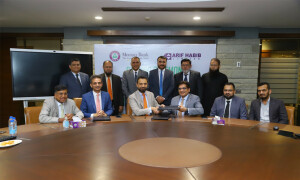New laser gun can beam audio directly into people’s ears

In order to make a message more audible to the specific person, researchers have created a radical laser gun to perform the task without any receiver equipment.
Researchers from the Massachusetts Institute of Technology have revealed a new radical laser gun that can beam audio directly into a person’s ear across a room. The researchers have been able to transmit different tones, music, and recorded speech at a conversational volume.
“Our system can be used from some distance away to beam information directly to someone’s ear. It is the first system that uses lasers that are fully safe for the eyes and skin to localize an audible signal to a particular person in any setting,” said team lead Charles M. Wynn.
Doctors could soon begin sealing wounds using lasers than stitches
The system makes use of a technique called the photoacoustic effect that occurs when a material forms sound waves after absorbing light, explained Daily Mail. Researchers used water vapor in the air to absorb light and create sound.
“This can work even in relatively dry conditions because there is almost always a little water in the air, especially around people. We found that we don’t need a lot of water if we use a laser wavelength that is very strongly absorbed by water. This was key because the stronger absorption leads to more sound,” said Wynn.
Researchers believe that this laser gun could be used anywhere from in the home to large outer spaces. They also claim that it has a drastic effect on everything from warfare, permitting messages to be sent to troops, to being heard across a noisy room.
“Communication across noisy rooms, hail and warn applications, and localized communication directed at only the intended recipient are a few possibilities,” said first author Ryan M. Sullenberger.
The team changed the length of the laser sweeps to encode various frequencies, or audible pitches, in the light. Through this, the signal can only be heard at a certain distance to an individual, instead of everyone who crosses the light beam.
“We hope that this will eventually become a commercial technology. There are a lot of exciting possibilities, and we want to develop the communication technology in ways that are useful.”

























Comments
Comments are closed.